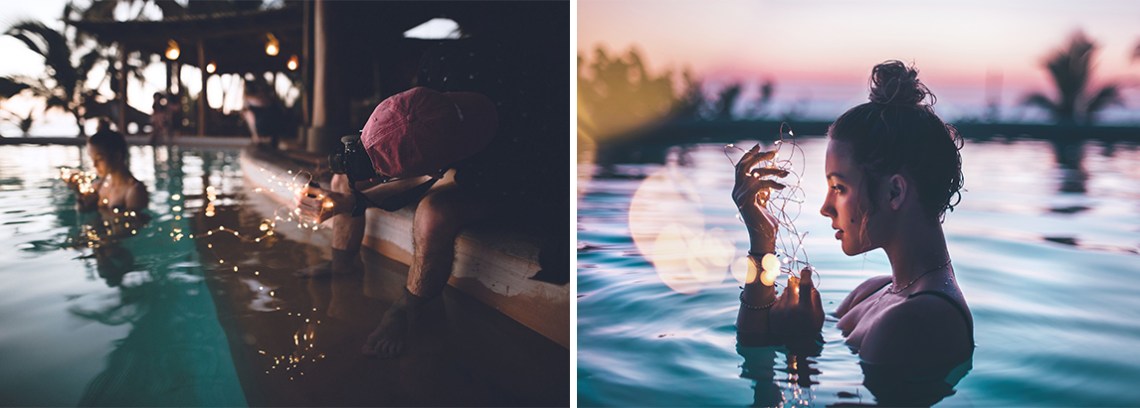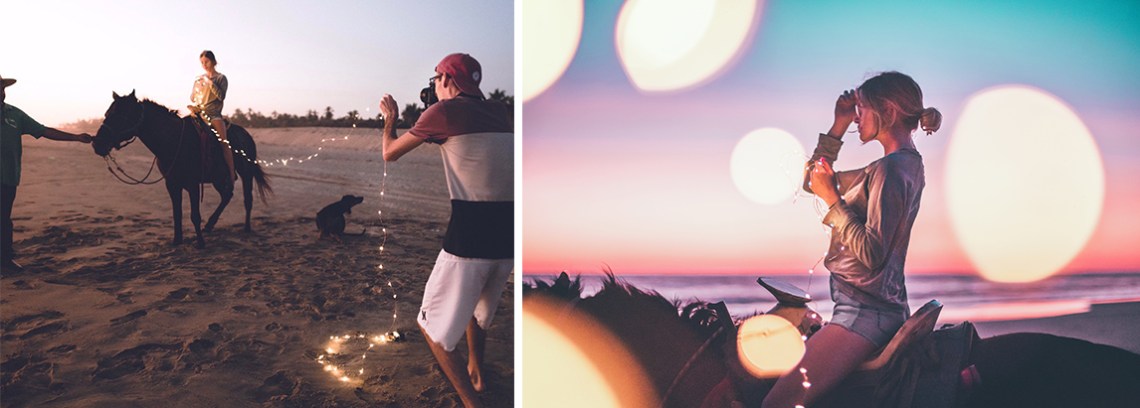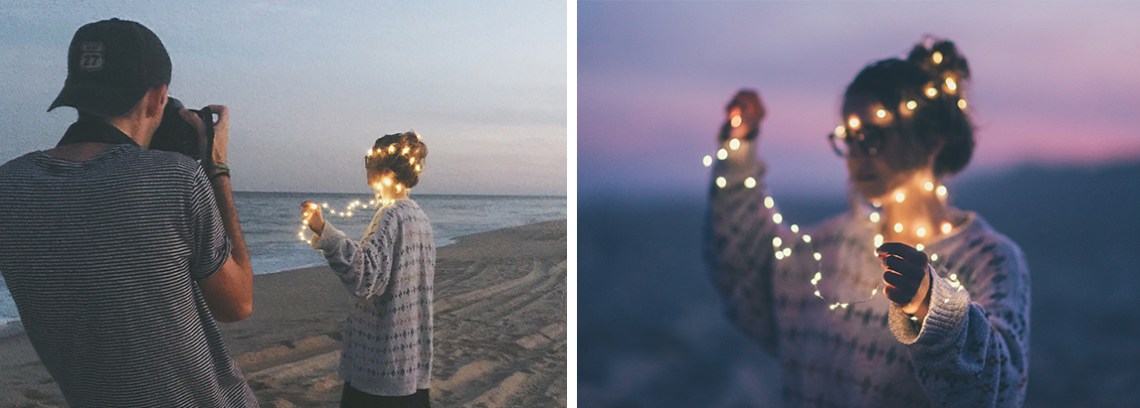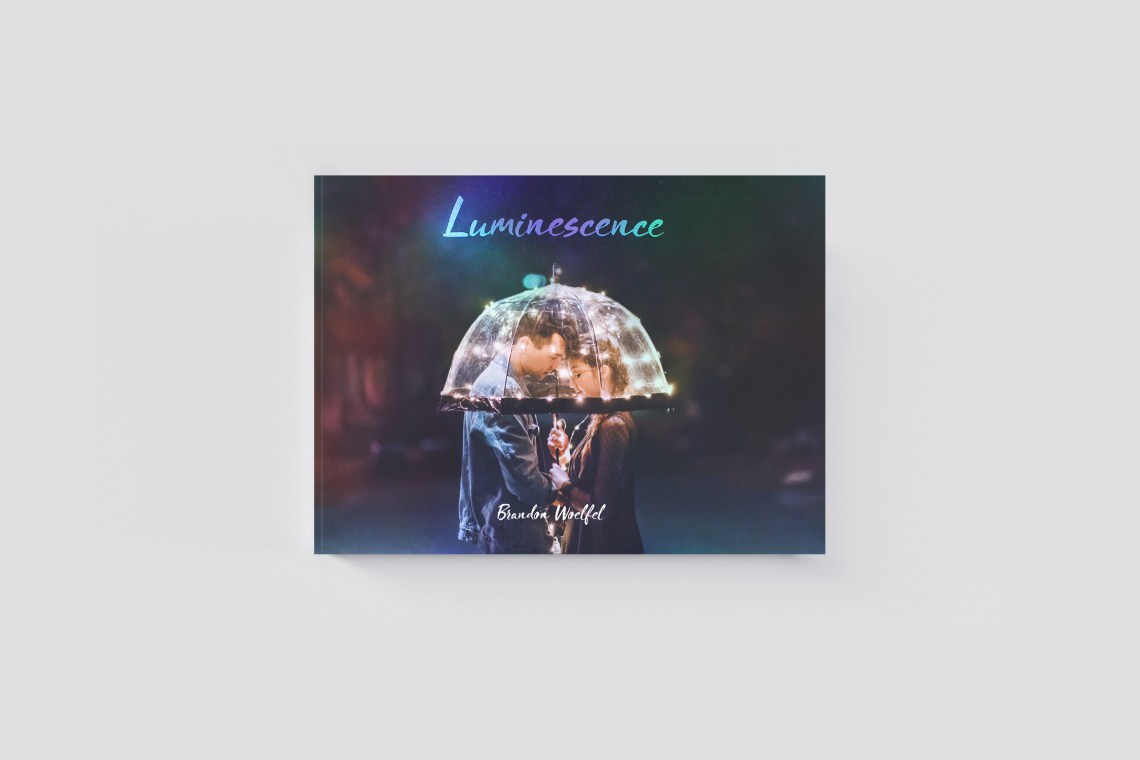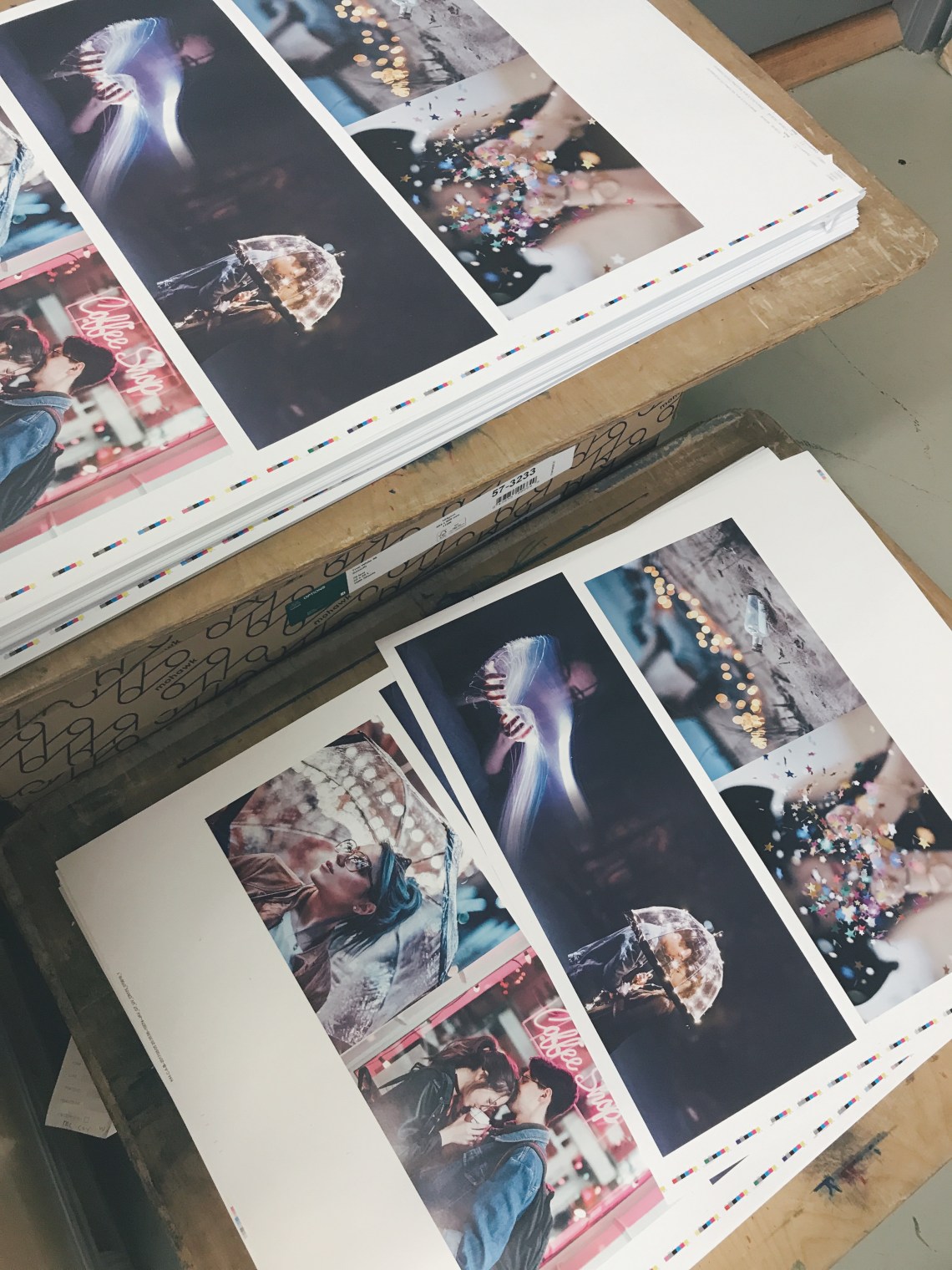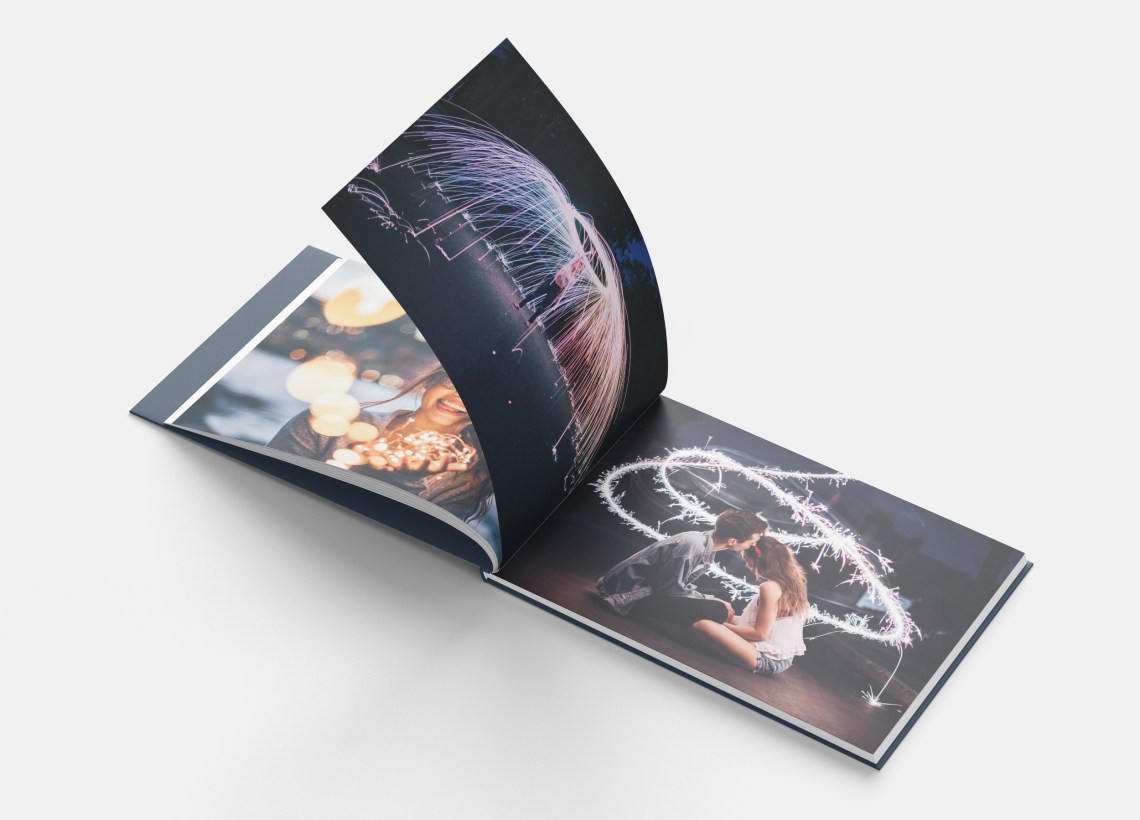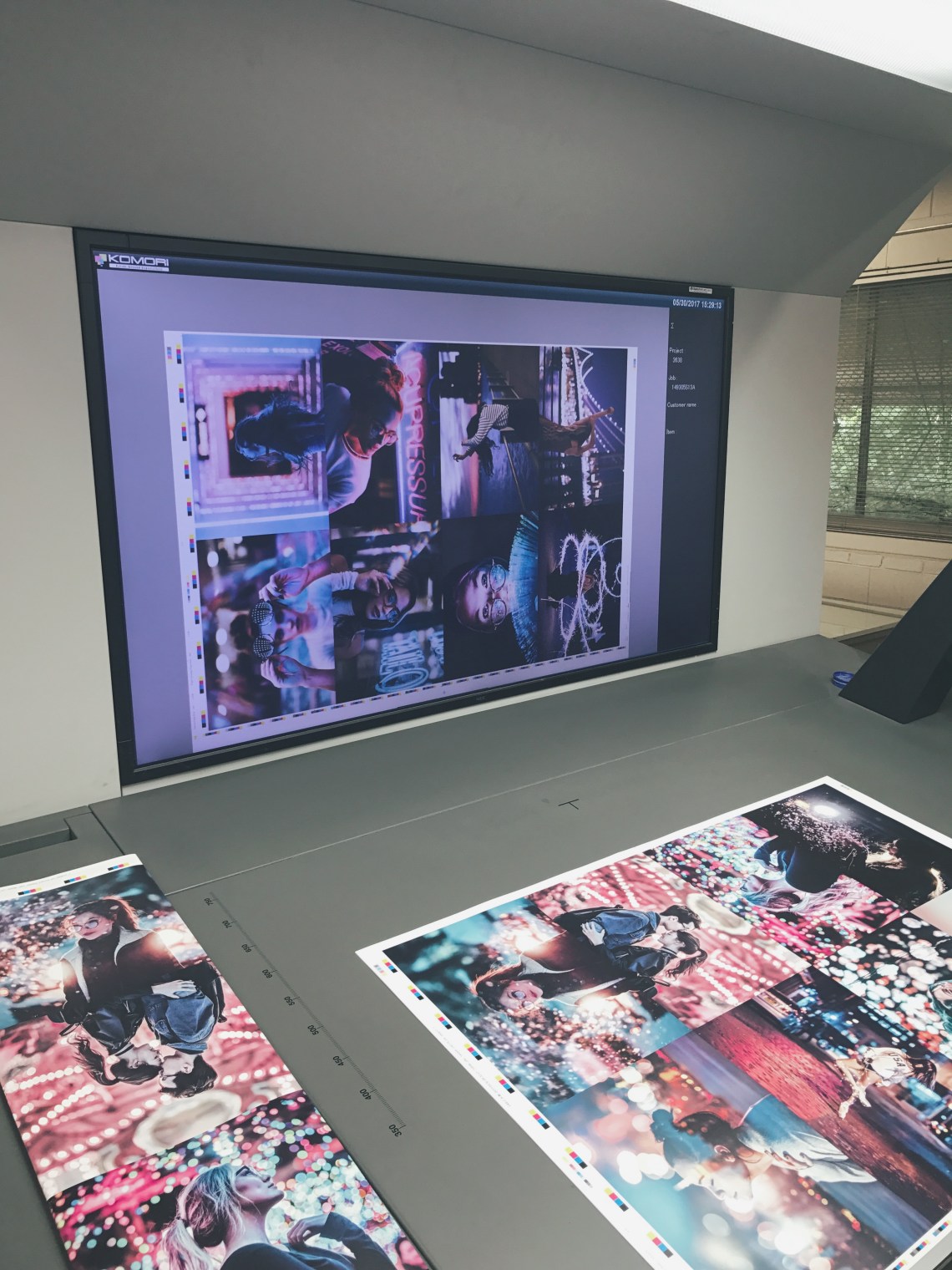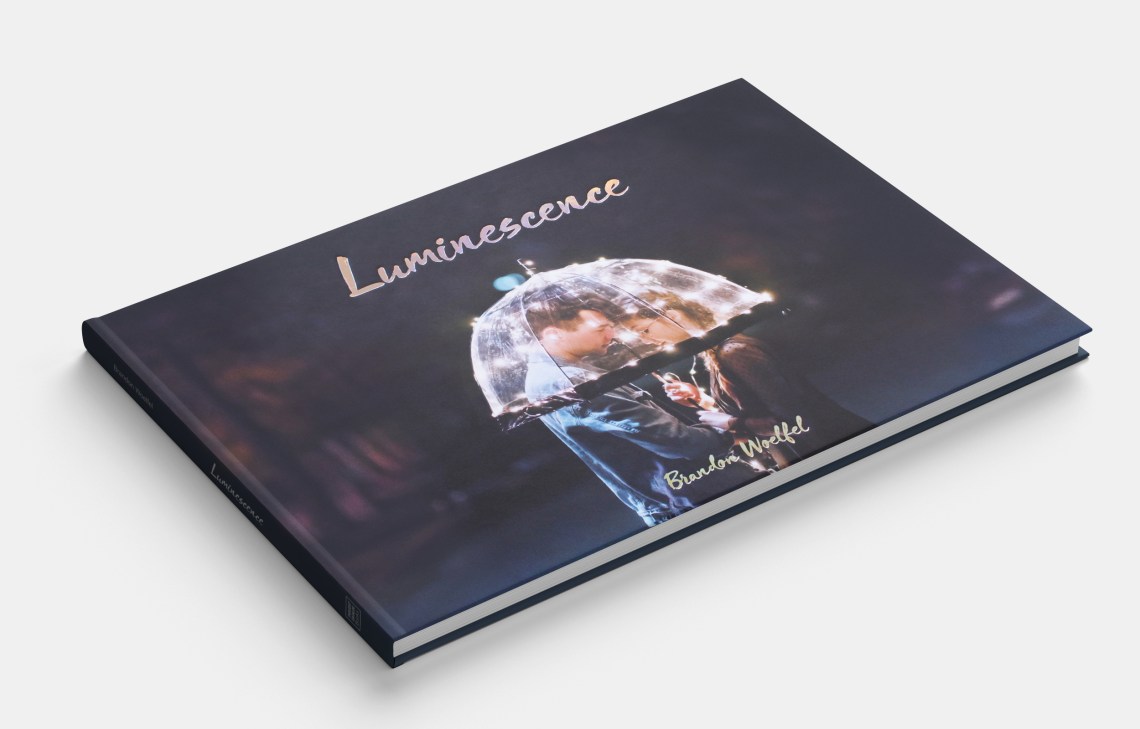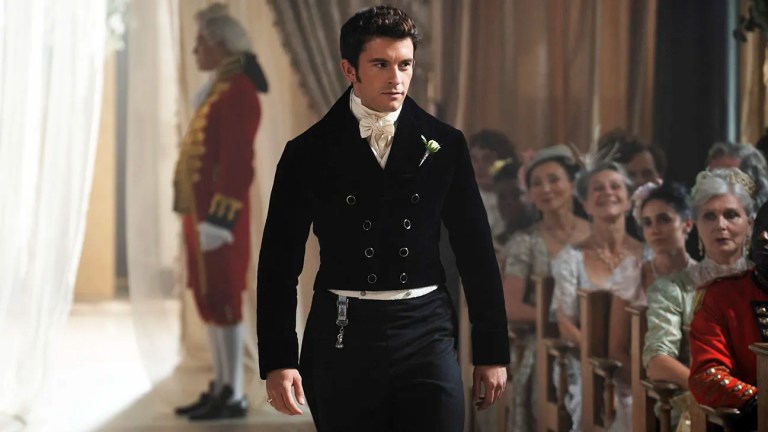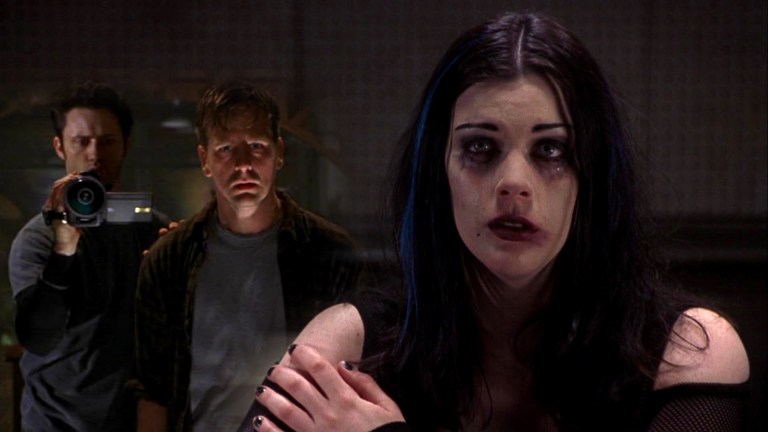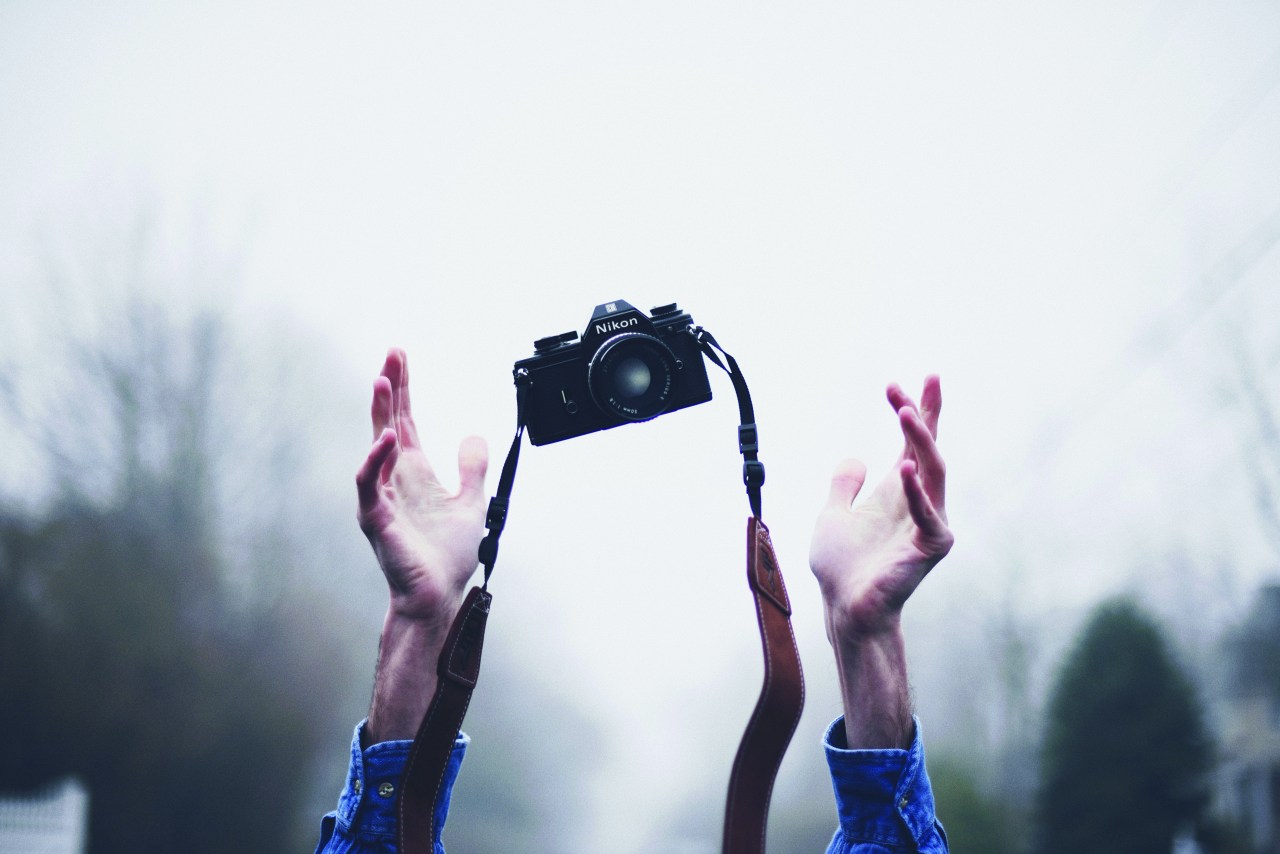
An Interview With Photographer Brandon Woelfel About His New Book, ‘Luminescence’
By ![]() KJ Parish
KJ Parish
On May 30th, 2017, I had the distinct pleasure of sitting down with Brandon Woelfel at Classic Color, a print shop in Chicago where Thought Catalog Books is producing his first full-color photography book, Luminescence. Brandon is a soft spoken and kind fellow who a uses a camera and a sculptural editing process to create an alternate reality where light is playful and almost life-like as it swirls around, illuminates, and intersects with the world of his subjects. We had a chance to talk a bit about his creative process amid the buzzing of print machines.

KJ Parish: Hi Brandon. When did you first become interested in photography?
Brandon Woelfel: I was in my sophomore year of college at the School of Visual Arts studying computer art and I kinda got interested in it through Instagram. I kept following all these photographers I looked up to and I actually got my first DSLR at 19 and now I’m 22. So, I’ve been doing it almost 4 years but I’ve definitely been into art my entire life…taking art classes at school and side classes. I’ve always been an artistic kid.
KJ: Are you inspired by people that have a digital or extra-worldly concept or technique in their artwork?
BW: I’m always inspired by unique styles. For so long I kind of got into my own niche of editing and I guess that kept evolving into something that it is right now. It’s always going to keep evolving and changing so it’s definitely a lot of fun.
KJ: There’s kind of a realism and fantasy component to your work and I’m wondering where that came from and how that started.
BW: I think it’s always been there. I guess when I started—I don’t know—it definitely evolved into what it is right now.
KJ: Did you feel drawn to working with light early on? When do you feel like the first / earliest pictures that became part of Luminescence—if you can pick out one or two conceptually—how did those even come to fruition or where did those ideas come from?
BW: I started shooting a lot with my friends and just became comfortable with expressing myself to them and what I wanted to get across in the final product. So…they helped me a lot just kind of express myself.
KJ: You were drawn to light though, in particular?
BW: The light play came in…the first time I did it was around Christmas time and I feel like I just never stopped. Everyone does the light play around Christmas but I felt like I just kept going with it and never actually stopped.
KJ: Did it actually start with Christmas lights? With one photo and you started to edit that photo and you’re like “what can I do now???”
BW: Yeah, because I like challenging myself with photography and shooting at night kind of became that challenge for me…how I can play with light and recover all those shadows because shooting at night your settings are always changing depending on the light source. The challenge for me was what kind of sparked the light play.
KJ: It was sort of a technical, continuing conceptual exploration.
BW: Yeah, yeah. I challenge myself with what else I can do…pushing the limits and just keep going off that.
KJ: So, you’re always seeing what else you can do.
BW: Yeah, sometimes even with using different models I feel like the whole picture is different. It’s a whole different look depending on who’s in it and I take a lot of photos in the same spots but I feel like you wouldn’t really know because you can make them look so different with just the light source and who’s in it and how you edit it. It’s funny because I’ve actually taken photos in my room a lot but throughout the years they’ve totally evolved. Comparing [photos] to those taken a year later is completely different. I try and edit at least a batch of photos per day so with that it’s always my editing style changing, finding something new, finding new tools, and watching different artist tutorials.

KJ: It sounds like you’ve taken a lot of photos in the same places but do you purposely go out and find new places, too? What inspires you about a place?
BW: I actually follow a lot of accounts on Instagram, and since I’m based in NY there are a lot of art galleries around there. I follow accounts that keep me up to date on so scouting out is fun for me. I’ll find a new location and screenshot it and send it to my friends and say “We need to go here! It ends next week!” and then we’ll make a trip out of it and go for fun but also take photos. That happened like last week, actually (laughs). So, it’s definitely the fun of it and then getting home and editing those photos is like a whole different experience for me.
KJ: You take photos inside of gallery exhibits?
BW: Yeah, I do that a lot. There’s a lot of different ones that are hidden no one knows about—they’re only for like a week long. Definitely a fun thing for me.
KJ: Huh, that’s really cool. What are you looking for when you’re putting together a photograph or an idea for a photograph?
BW: I’m looking for the right light. I don’t like to shoot in direct sunlight—that’s not my thing—but if I have to, I try and make it work around my own style. I like to keep that kind of neutral…a lot of times I want it to be known that it’s my own style and people could find that [style] in a crowd—that’s really important to me. But yeah, I shoot a lot of ‘depthy’ photos and the background is super blurred so I’m always looking for what the background could give me and the lighting and foreground light playing off the mode. It’s so many different categories that come into play when I’m thinking of a photo. It’s not really one specific thing.
KJ: Do you want to talk specifically about any art that inspires you? Or people that inspired you at all?
BW: Um..let’s see. I’m not inspired by one specific artist, it’s more like if I see an image and then I’ll either go screenshot that for ‘inspo’ or save it for later and it’s usually all different. Like, if you looked at my ‘inspo’ folder, it’s all different artists but the concepts are along my style.
KJ: You’re drawn to people’s technique and not necessarily one person’s continuous style.
BW: Right, yeah.
KJ: That’s interesting. That’s like, a whole other conversation (laughs). How did you come to photograph so many couples, especially the cover photo [for Luminescence]—that particular couple seems to be important to you.
BW: Yeah, that girl in the photo is my neighbor. We live right next door [to each other] and have lived next door to each other for our whole lives, actually. We grew up together and she’s been there through all my, like, photo techniques. She knows all about it. And then he came into the picture—I kind made them an ‘actual picture’ (laughs)—and yeah…they are always down for experimenting. They’re always helping me out with photo concepts. If I have an idea, I’ll just be like “Go outside!” because she lives right there. I like how they give a different emotion to the photo. It’s more relatable. It definitely shows more emotion. Even having friends in a photo, it totally changes the vibe…
KJ: As opposed to models, you mean?
BW: Yeah—I like having photos look almost candid and ‘in the moment.’ I mean, I’ll obviously pose the model or friend I’m using but I like it to look more natural than it feels.
KJ: So they are kind of a continuing recurring couple for that reason because you have a personal relationship with them and they obviously have a relationship with each other. Is it weird for them at all that they’re kind of known [through your work]?
BW: They’ve gotten used to it. They have also gotten really good at posing too. I don’t really have to tell them anymore. With certain friends I want to use for photos, they have to get comfortable in front of the camera. I feel like I use a lot of recurring people because they know how I shoot and how I work so they just vibe off that.
KJ: So, do you know everybody that you’re shooting?
BW: I definitely meet a lot of them for the first time when we plan out a shoot and then, depending on how the shoot goes and if we vibe and stuff, I definitely have become great friends with a lot of the people. A lot of the people in the book that are recurring I’ve become great friends with. Just from shooting or I’m already friends with them and they help me out with a photo. I’ve made a lot of friendships through photography.
KJ: Do people approach you a lot to ask if they can be photographed by you?
BW: Definitely on social media a lot but I mostly shoot for brands, not test shoots like that. But it’s definitely a lot of fun meeting someone for the first time and how the photos play out and the day—you remember that day with all of the photos we took together.
KJ: Okay, so you said you’re 22, right?
BW: Yeah.
KJ: Where did you grow up?
BW: I grew up and am still based in Long Island, New York.
KJ: What do you shoot with?
BW: I shoot with a Nikon D750 and I mostly use my 50mm 1.4 but I also shoot with my 85mm 1.4 a lot. Here and there, I use my 35mm. I like to use fixed portrait lenses, not really zoom. Those are my favorite ones.
KJ: If you had to describe your technique or your process, how would you describe it?
BW: It’s definitely more technical than it seems. I have grown to know the programs I use and what each tool can benefit me for each photo. It’s definitely more of a technical process, playing with a lot of layers and hues, color correction, selective color…a bunch of different elements and tools play into each photo that I take.
KJ: As you put together the photos for Luminescence, what did you feel was the underlying concept? Did you feel there was an underlying concept emerging or a feel to the book or was it more about this technical exploration of light? Do you feel like it became emotional or is there a way you might describe this work to someone who’s never seen it or seen your work yet on Instagram?
BW: When I was curating it I was pulling all of my favorite images that I’ve taken and thinking of what went on behind them that no one will get to see. But they get to see the final image, which is cool. Putting them together as each full page, each photo kind of reflects off the other—it’s like the color is playing off each other. It doesn’t have to be the same moment but I curate it so the colors play off each other. That was kind of a challenge for me too because I was putting together images I never thought could go together. But, after looking at them from afar and examining each page, it kind of came together to be what it is. A lot of light play in there.
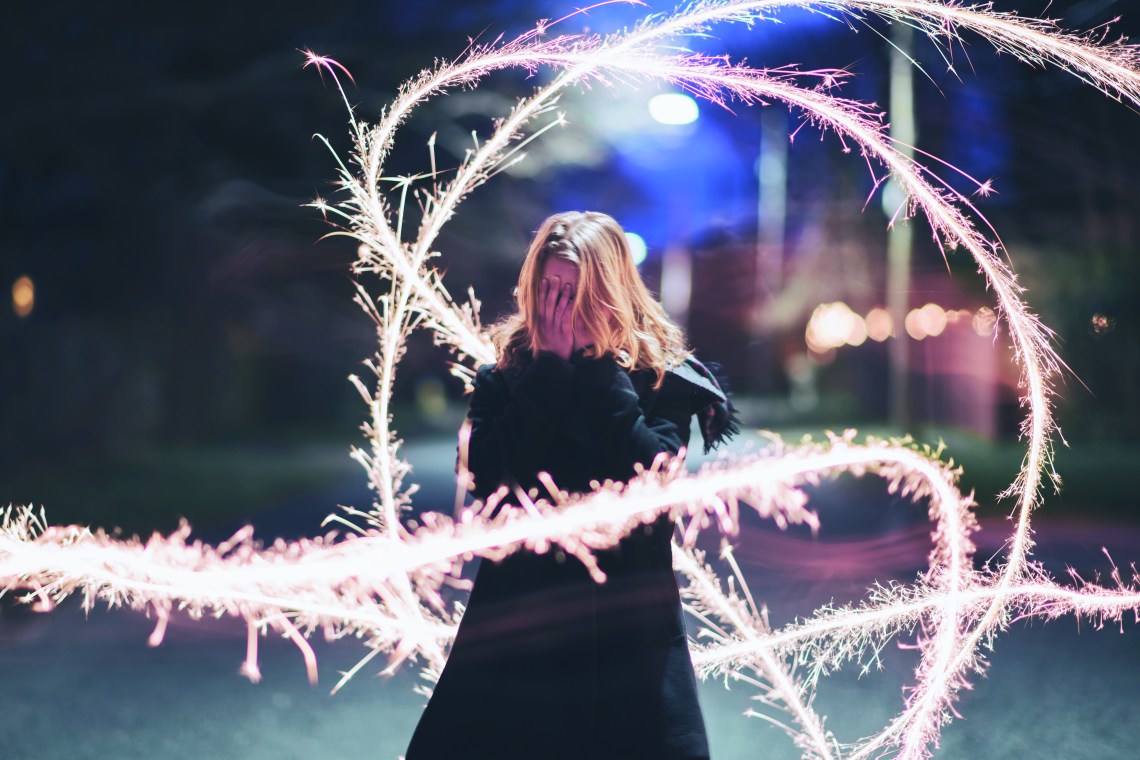
KJ: What was it like to put these images together for a book that is going to appear in print?
BW: It was an awesome feeling and it still does not feel real, but umm.. it was cool because I really only had maybe 1…2…3 of my photos actually printed out so coming here and seeing it all printed on a mass scale like this is a crazy feeling because, like I said…everyone’s seen it on a small scale [Instagram / mobile]… so it’s definitely an awesome feeling being able to hold a photo that you took. And showing the people that are in them. They are super stoked on it too. It’s cool.
KJ: I think it’s interesting that you’re coming at this in such a different way than ‘traditional’ photographers in the past. So much of your work existed in a [solely] digital space—on Instagram where people are interacting with it in a really specific way around a specific device. Now it’s coming alive in a different way with print. This is a first for you, I know, and you’ll have some kind of experience once you’re thumbing through the book when it’s done—like “wow, this is how it feels in this format” and sensing what feels different about it. Not having been someone who spent all of their time in a dark room trying to develop all of these, it’s such a different experience [with paper]. Just thinking of the experience of looking at it on the screen with the light of your screen playing with the light in the photo and how that compares with print and paper.
BW: And, being able to hold something that has a memory behind it is a cool feeling.
KJ: I thought it was interesting as I was going through all the proofs. All of the repetition of the models and the feel of them—it starts to have this uniformity after a while. It’s like these expressions of different lives, settings…a lot of different women moving through this book and it has this youthful, playful feel to it.
BW: Yeah, someone described or commented that “your photos all look different but they somehow go together” so I feel like that was my goal for this book—to have every page look completely unique but you know they’re all from the same book.
KJ: It’s cool because [a photo] might be shot in a place that seems dark and gritty but there’s always this kind of positivity or optimism that seems to be a part of your work and I don’t know if that’s intentional or not but it’s definitely there.
BW: Yeah, I love photos that have that feel good sense and expression in the photos. You can relate to it or it can remind you of a good time in your life or something that you’re going through.
KJ: Well, great. Thanks for taking the time for this interview.
BW: No problem!
